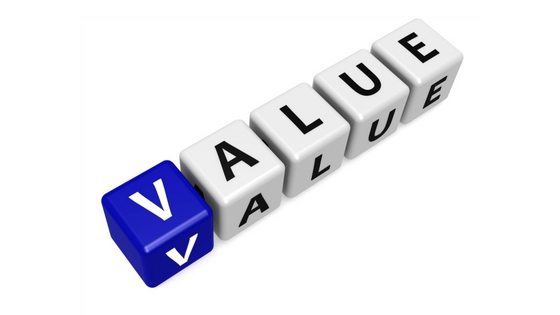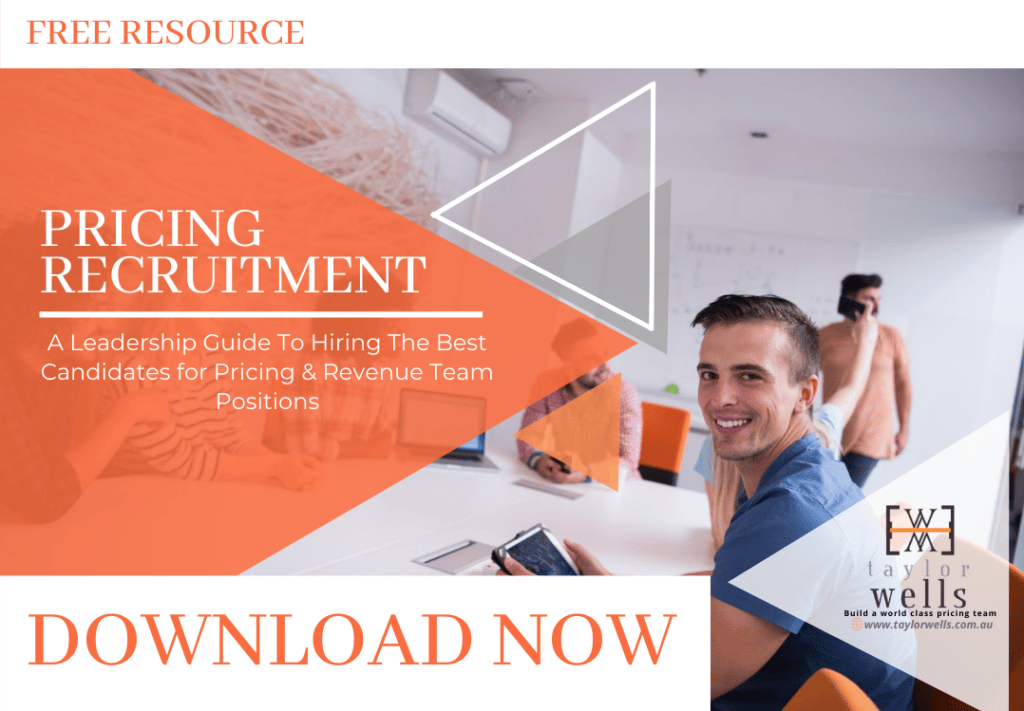
Pricing Executive Search 👩💻: Standard Hiring Process Is Broken and Flawed
Talent and opportunities abound when you have the insight to identify them, the skills to locate them, and the ability to distinguish the best options. However, the challenge lies in the fact that numerous Australian companies follow conventional recruitment procedures that provide limited filtering capabilities and a predetermined series of steps, yet they anticipate finding and realising the true value of pricing executive search.
>Download Now: Free PDF Pricing Recruitment
What is the importance of pricing executive search?
Pricing executive search is a pivotal aspect of talent acquisition for organisations seeking top-tier leadership. Firstly, a well-considered pricing strategy aligns cost with value, ensuring that companies invest proportionately in their executive talent pipeline. For instance, a technology firm looking to secure a visionary Chief Technology Officer should be willing to allocate a budget that reflects the strategic significance of this role.
Secondly, pricing clarity in executive search builds trust with clients. Transparency about fees and services strengthens the client-consultant relationship, setting the stage for a successful partnership. For instance, presenting a clear breakdown of fees and anticipated outcomes fosters transparency and reassures clients that they are making an informed investment.
Lastly, competitive pricing in executive search enables firms to remain agile in a dynamic market. By benchmarking pricing against industry standards and continuously evaluating the market landscape, businesses can adapt their pricing structures to remain competitive while delivering exceptional results. For instance, a boutique executive search firm might choose to differentiate itself through flexible pricing models that appeal to clients seeking customised solutions.
What qualities should a company look for in a pricing executive search?
When selecting a pricing executive search candidate, several key qualities are essential. First and foremost, the individual should possess a deep understanding of pricing strategies across various industries. This expertise is critical to tailoring pricing models to specific business needs. For example, a successful pricing executive should have experience crafting dynamic pricing strategies in the highly competitive tech sector, like those used by companies such as Apple, which adapt prices based on market demand.
Furthermore, strong analytical skills are imperative. A pricing executive must be adept at crunching numbers, interpreting data, and making data-driven decisions. Consider the way Netflix employs data analytics to adjust its pricing based on user preferences and engagement metrics.
Lastly, effective communication is vital. The pricing executive should be able to convey complex pricing strategies and concepts to both internal teams and external stakeholders clearly. An example here might be how Amazon communicates its various pricing tiers for Prime memberships, ensuring customers understand the value they receive. Overall, these qualities ensure that a pricing executive can navigate the complexities of pricing in today’s business landscape.
What is an effective process for a pricing executive search?
An effective process for a pricing executive search begins with a comprehensive needs assessment. This involves collaborating closely with the client to understand their specific pricing challenges, market dynamics, and organisational goals. For instance, if a global pharmaceutical company seeks a pricing executive, a detailed assessment would delve into factors like regulatory compliance, competitive pricing strategies, and revenue optimisation objectives.
Following this, a tailored candidate profile is developed. This document outlines the ideal qualifications, experience, and cultural fit required for the role. A crucial step is leveraging industry-specific knowledge, such as understanding the unique pricing considerations in sectors like SaaS, where subscription-based models are prevalent.
Once the profile is finalised, a targeted search and screening process commences. This involves identifying potential candidates, assessing their pricing track record, and conducting in-depth interviews to gauge their alignment with the client’s needs. Utilising a vast network and advanced search techniques, the search process ensures the selection of candidates who not only possess the necessary pricing expertise but also resonate with the client’s organisational culture. This approach ensures the best possible fit for the client’s pricing leadership needs.
The problem is we often see a standard hiring regimen go something like this: Recruiters start by posting poorly written jobs on job boards, review incoming applications and CVs, move on to phone or face-to-face interviews with people with the “best” CVs, and then draw on various off the shelf tests, often including psychometric tests, to determine which applicants are the best fit.
We find:
- Candidate interviews only yield 4-7% of all decisions during a standard recruiting process yet consume 60- 90% of total recruitment time and resources
- Branded aptitude tests are neither tailored to pricing roles nor measure the right competencies and characteristics required for high-performance pricing teams.
- 82- 89% of all decisions regarding fit and suitability occur outside the interview room; relatively unchecked and under the radar
- 85%-95% of all hiring and career decisions remain largely uninformed, gut feel and susceptible to error and bias
- Time-to-hire for specialist and executive roles increases by 100-120% when businesses use standard recruiting processes
- Quality-of-hire decreases by 28% – 62% when the recruiting process lacks specialisation and personalisation and follows a standard and predictable sequence of events.
Table of contents
The table of contents for this article includes:
I. Value In Pricing: 6 Common Mistakes When Recruiting A Pricing Role?
II. Agile Recruiting: Best Approach For Business Talent Development
III. Smart Price Teams: How To Recruit Pricing Teams With AI!
IV. Cognitive Bias: Mitigate Impacts Of Unconscious Hiring And Recruitment
V. Recruiter: The Best Way To Eliminate Bad Pricing Hires

PRICING EXECUTIVE SEARCH
Value In Pricing: 6 Common Mistakes When Recruiting A Pricing Role?
Discussion On The Value Of Pricing Recruitment
Latest Taylor Wells research indicates that 80-95% of all decisions made during standard recruiting processes for both employers and candidates remain largely unfiltered and prone to error and discrimination; – perpetuated largely by latent human and/or algorithmic biases.
We see large volumes of applications for the analyst and junior pricing manager roles overwhelm recruiters and managers who spend too much time sifting through CVs and applications without clear hiring criteria.
Alternatively, we see low numbers of applications for niche, specialist or senior pricing and commercial leadership; roles overwhelm recruiters and managers who spend too much time advertising roles on; LinkedIn and job boards because of limited or no qualified candidate pools.
Ongoing Taylor Wells research on the value in pricing; and recruitment indicates that better filtering throughout the recruiting process can help you reduce time to hire statistics and drive much better team performance outcomes in the process.
For example, optimising our clients’ recruiting process delivered them:
- Additional margin gains in the first 3-6 months of a new pricing team forming (regardless of industry challenges)
- 25-58% improvement in overall pricing team competency scores
- Higher performance ratings in new and challenging pricing jobs
- Higher pricing team retention rate (i.e., > 1 year)
- Significantly lower their time to hire stats to (i.e., < 31 days)
A highly personalised recruiting process also improved candidate engagement figures during the hiring process.
For example, over 90% of applicants surveyed about Taylor Wells pricing recruitment services said our recruiting process was much fairer, more engaging and unlike any recruiting processes they had experienced in the past.
Inserting objectivity and grounded feedback into recruiting enhances candidates’ feelings of being treated fairly during the hiring process – on top of this, it provides people with valuable feedback to learn and develop.
Implications Of Realising The Value Of Pricing Recruitment
Standard recruiting struggles to find and identify quality pricing candidates because it fails to filter people out of the process effectively.
Which means…
…A lot of high-quality pricing candidates are being overlooked or passed by during standard recruiting processes.
…Too many unqualified applicants are getting callbacks for interviews and offers for pricing team roles when they should have been removed early on in the process.
…Few business leaders have objective insight into the suitability of their candidates,
and.
…fewer than half use objective data to make talent decisions, resulting in regretted hires.
〉〉〉 Get Your FREE Pricing Audit 〉〉〉
Conclusion
This article discusses the latest insights into Australian recruiting and shows that standard assessments and filtering are inadequate to compare potential candidates for pricing and revenue management roles.
While some organisations may be reluctant to optimise their recruiting process and/or use a more rigorous filtering system, Taylor Wells shows the significant legal risk associated with using relatively subjective and standard recruiting processes.
To avoid common recruiting mistakes in your next recruiting process, Taylor Wells talent advisory and recruitment firm highly recommends using a specialised “filtering” system to measure the right mix of skills, attributes and characteristics required for high-performance pricing teams.

PRICING EXECUTIVE SEARCH
Agile Recruiting: Best Approach For Business Talent Development
…Imagine a hiring process that offers you the tools, benchmarking data and evidence you need to make difficult selection decisions with ease and absolute confidence (i.e. agile recruiting)…
Imagine a recruiting process that not only finds quality people for difficult-to-fill roles but also helps you sort through the murky complexities of team mix and overcome obstacles blocking individual and team performance…
Recruiting is slowly changing: Over the past 5 years, we have observed recruiting and hiring in major ASX-listed and FT500 organisations becoming more urgent and more agile. Companies like IBM, GE, and Mitre have all been scaling up rapidly using agile recruiting.
Pricing Executive Search: What is agile recruiting?
Agile recruiting is a new way of recruiting: It’s more scientific and it is diametrically opposed to standard recruiting.
Standard recruiting is a low-leverage practice applying a cookie-cutter approach across all hires regardless of specialisation.
Businesses are switching to agile recruiting because it’s a simpler, faster and more precise model of recruiting for your pricing department. Business leaders are also choosing agile recruiting because of the increasing legal exposure attached to standard recruiting, including:
- Heavy reliance on subjective opinion, speculation and gut feel
- High replacement costs
- A depersonalised process
- Concerning diversity figures
- Static and rudimentary trading practices, hedging against risk by creating an illusion of competition between recruiters and suppliers
- A zero-sum game – if I acquire the best person, then my competitors will lose
- A strong focus on efficiency metrics like time-to-hire, and cost-per-hire versus quality metrics, candidates’ experience, and process improvement
- An organisation-focused process rather than candidate focused process.
Companies like P&G, BP and J&J are all testing new recruiting processes, data analytics, algorithms and technology to either find and track candidates suited to join an agile organisation or an organisation moving from traditional to agile.
CEOs and HR executives are keen to try and experiment with an alternative recruiting model to find and identify high-quality candidates that can adapt to new ways of thinking.
Agile recruiting is not just an event, it’s an ongoing process of discovery – a way of driving better hiring outcomes and also a catalyst for accelerating innovation.
HR executives and business leaders are keen to encourage agile recruiting because it is based on grounded feedback loops and contingencies to keep recruiting moving quickly and focused on finding quality candidates with technical expertise and the DNA to deal with change.
Pricing Executive Search: Agile recruiting also has bottom-line benefits too:
The top 1% of employees produce up to 25 times as much as average performers. This means our job as talent advisors is to find high-quality people quickly and integrate them within your business in the right way.
This means using the recruiting process to drive more profitable outcomes and co-create better employee experiences.
Agile recruiting is about bringing the right mix of people together and setting them up for success – a diversified team that offers you a rare mix of skills, styles and capabilities to drive 3 times more revenue and 12 times more value.
〉〉〉 Get Your FREE Pricing Audit 〉〉〉
Conclusion
Agile recruiting is not organic. It is a scientifically valid model implementing agile and iterative processes that yield high-performance teams and culture.
Agile recruiting provides you with evidence to make a difficult decision with ease and confidence. It also gives candidates a chance to make more informed career decisions too.

PRICING EXECUTIVE SEARCH
Smart Price Teams: How To Recruit Pricing Teams With AI!
AI and digitisation were supposed to improve recruitment and ease finding smart price experts, but in reality, recruitment is becoming more and more administrative and transactional.
The primary role of the recruiter should be to woo and vet candidates when seeking talent. However, most recruiters spend most of their time overseeing the automation of administrative recruitment tasks. Tasks and processes that are fundamentally broken and have flaws.
Ultimately, businesses are going down a dehumanising recruitment path that lacks the rigour, scientific investigation and human connection that both candidates and recruiters crave.
It is a mistake to assume candidates are happy to crawl over whatever piles of broken glass we put in front of them to get a job with you (i.e., lengthy online applications, automated and soulless rejection emails, limited contact and feedback, irrelevant testing, time-wasting interviews, terrible onboarding programs).
Pricing Executive Search: Can AI be useful for smart price recruitment?
The assumption that everyone wants to work for large corporations is arrogant and unrealistic. They don’t. Good recruiters do a lot of wooing, selling and advising, qualifying throughout the process to get good candidates to work for you in smart price management roles and leadership positions.
Good recruiters help candidates make informed decisions. They find and woo high-calibre candidates who would probably never have even considered the company before the recruiter spoke to them.
Organisations, however, seem to focus more on time to hire and on filling jobs. Executives seem to think everyone loves the business as much as they do.
Match marking algorithms are a guide, not a deciding factor of candidate fit and suitability. High dropout rates during automated or poorly implemented recruitment processes are a big problem and should not be ignored.
- People trust people, not computers.
- Recruiters cannot accelerate change under the current recruitment model.
- Automating a broken recruitment model is not the answer to talent shortages
It seems we have become so caught up with lowering costs, updating technology and transitioning from old to new, that we are forgetting that recruitment is human.
We are underplaying the role of good recruiters; and stopping them from driving and embedding the culture that you want to see.
Underneath this recruitment, the debacle is three very dangerous assumptions:
1) You don’t need human recruiters
2) Al fills vital talent gaps
3) people really want to work for large corporate businesses
It is a false delusion to believe that sharp and switched-on people are dying to apply for your jobs. In reality, people are not that fussed and will disengage very quickly.
It is wrong to assume AI is the answer to talent shortages and smart price recruitment: algorithms are not perfect match marking systems. AI struggles to read human interactions, subtext and emotional responses. Recruitment is human. See our blog on why diversity is vital.
It is a mistake to ignore the fact that people prefer to deal with real people during the recruitment process. Good recruiters hunt for talent. Good talent managers create sticky recruitment processes that keep talent interested in your business.
If CEOs only knew how badly employer branding; (the kind that prospective job applicants see) was hurting them in the talent acquisition arena, then maybe they would put more smarts, analytical firepower; time and energy into the internal recruitment function.
A recruitment function with the capability to write genuine; human job ads in plain English and identify, research, and interpret traits and skills for high performance is the key to bridging talent and capability gaps.
〉〉〉 Get Your FREE Pricing Audit 〉〉〉
Conclusion
Gamification, AI-powered recruitment algorithms and recruitment tracking systems will never be the complete answer to the matchmaking / fit challenge. They are tools to support a recruiter, not a replacement.

PRICING EXECUTIVE SEARCH
Cognitive Bias: Mitigate Impacts Of Unconscious Hiring And Recruitment
Unconscious, a cognitive bias in hiring refers to accidental, unintentional, very subtle and completely unconscious cognitive patterns. They are perspectives, reflections filtering mechanisms and essential tools saving you from having to re-evaluate and contextualise every piece of information you receive about a candidate. They can also be negative influences in your mind, distorting your perceptions and altering responses to new people and new situations.
A whole body of cognitive psychology and neuroscience research shows that our unconscious biases can often lead us to focus only on things we believe are important (Kahneman, Cialdini, 2016). Without us even knowing it, we may be shutting out the very people we need in our businesses because we are not testing the parameters of our own cognitive box.
Pricing Executive Search: Cognitive bias when hiring – examples
When left to our own devices, the chances of hiring the wrong person increase significantly. 50% of hires fail. When our cognitive bias gets the better of us, the following hiring mistakes are almost inevitable:
- Hiring people like us because we assume people like us our better; (bias of similarity or in-group bias, out-group bias, or self-serving bias).
- We tend to conform to vague definitions of business culture fit because we do not want to challenge or disrupt established team norms or accepted rules of behaviour (Groupthink).
- Tends to follow our gut feeling because we are just too busy;(and our minds are perhaps too full of other matters) to question our assumptions about people (biases of expedience or availability bias, confirmation bias, Halo effect).
- We tend to believe that experience is more important than capability and potential because our deeply held belief is that experience; (not capability) predicts high performance; (biases of experience or Fundamental Attribution Error, False Consensus Effect, Illusion of Transparency effect).
- Hiring people in our network (or connected to someone we know) because we believe closer is safer or better;(bias of distance or Temporal discounting Affective Forecasting).
Ultimately, subject hiring is much more about the hiring manager than it is about the candidate/future employee. When we are left unchecked; and without evidence to back our hiring decisions, we shut out diversity of all kinds and revert back to what we know and what we think is important. This means that when the hiring manager does not view hiring as important or critical to future team performance, it is very likely that they will not view the people they hire as important either.
〉〉〉 Get Your FREE Pricing Audit 〉〉〉
Conclusion
How we hire can either blind us or open us up to new opportunities and truly remarkable people. People are dynamic and complex. Hiring for cultural fit often lacks objectivity and definition and leads to biased candidate selections that hurt diversity and team mix.
A hiring process that strives for perfection, will lead to disappointment. Learning from hiring failures leads to breakthroughs and often illuminates solutions to problems we never saw. Doing the same thing over and over again will lead to bad hires and dysfunctional behaviour further down the line.
Embrace disagreement and encourage people to challenge your thoughts, decisions and assumptions. Counteract cognitive bias by engineering productive debate and seeking objective evidence on individual capability and team skills.
If you are hiring at the moment, and want to know if you are under the influence of your own cognitive bias (see effective recruitment), tick or cross the following list to cross-check your prevailing behavioural patterns:
- Overconfident in my views about other people and their capabilities.
- I value someone’s competencies of equal worth based on how I feel towards them.
- Favours the norm unless I am incentivised to change.
- Tends to anchor my beliefs on my past references/experiences and/or based on one piece of information that may or may not be valid.
- Seek out opinions and facts that support my own beliefs and hypotheses.
- I favour ideas I’ve already invested time and money in.
- I tend to align with the opinions of the group
- Overvalue the opinions of senior leaders.
- I tend to believe that other people support my point of view.

PRICING EXECUTIVE SEARCH
Recruiter: The Best Way To Eliminate Bad Pricing Hires
The plight of the co-operative bank (UK) and Myer (Australia), as discussed in the Financial Times, Financial Review and Sydney Morning Herald, are continued reminders that the traditional recruiter model is fundamentally broken and flawed.
People know how to game a formulaic recruiter process that emphasises CVs and interviews. A Financial Times (FT) article explains that many candidates know how to cheat on psychometric tests and off-the-shelf aptitude tests as well (read full FT article: How to cheat on psychometric tests for more details).
Examples of bad hires in leading businesses
Andrew Flanagan and Mr. Flowers are two such cases; of undesirable candidates who overrated their experience, skills and ability in their CVs and interviews to secure high-profile financial and strategic; advisory roles in leading businesses in Australia and the UK. They both fraudulently won; executive appointments in order to conn their way through the; recruiter process and claim plum 6-digit salary packages.
The Guardian reports how “Mr Flowers, 66, stepped down from his £132,000-a-year job (circa $215K AUD) at the Co-op Bank in 2013 soon after a £1.5bn black hole in the businesses finances was discovered.”
Six months later he appeared before a Treasury select committee, where he was accused of not knowing the “very basic” details of the bank’s finances.
Andrew Flanagan is another telling case of how people are gaming the traditional recruiter model. The Sydney Morning Herald (SMH) reports how Andrew Flanagan lied about; working in Inditex clothing company in a fake CV. They continue to explain how he also lied about his skills, achievements and capability levels in numerous interviews with recruiters, HR and hiring managers; – he even served time in a Texas jail after being convicted of serious offences (to read full SMH article go to Myer ‘executive’ served jail time in Texas‘)
Flanagan pleaded guilty to obtaining financial advantage by deception. He basically; conned his way to a plum $400,000 package and was given the high-ranking title of General manager of strategy and business development at Myer.
Pricing Executive Search: There are serious flaws in the traditional recruiter model
80% of businesses today implement the same stock standard hiring process that both Mr Flowers and Andrew Flanagan went through and passed with flying colours ;(i.e., a CV, 1st round HR interview, 2nd round interview, and even aptitude tests and psychometrics).
The true nature of a candidate is often masked by a traditional recruiter model that almost encourages applicants to embellish their CVs; cheat on pre-employment tests and hone their interview pattern and technique.
Making the decision to hire on the basis of traditional; recruiter methods will expose you to substantial personal and financial risks.
Our research shows that a candidate’s self-assessment/self-estimation (i.e., what they say they can do) during a typical recruiter process is the worst predictor of success in any revenue manager or pricing role.
In other words, a recruitment process that relies on candidates’ own estimation of how they would behave in a future situation is not reliable and very likely to lead to performance failure.
How to break away from a broken recruiter model
Our research clearly shows that expert knowledge tests are one of the best predictors of success in technical/specialist commercial and financial roles or key account manager roles. We also find that expert tests in conjunction; with a suite of targeted and validated evaluation tools are the most effective way of hiring people for specialist roles like pricing and revenue management.
We find that when applicants are thoroughly pre-qualified and measured against key pricing attributes; during the recruiter process, our clients successfully avoided bad hires.
More importantly, our clients were able to identify high-calibre executives almost 5 times faster than typical recruiter processes; when they used robust pre-screening methodology that focuses on key pricing attributes, competencies and expertise.
〉〉〉 Get Your FREE Pricing Audit 〉〉〉
Break free from broken recruiter models & avoid bad hires
The global talent market is changing and looks vastly different to how it did just five years ago. The traditional recruiter model must also change with the times and support businesses; to align their people to more complex pricing and business environments.
We all need to get smarter in the way we recruit senior commercial appointments. According to a report by the Harvard Business Review; respondents collectively hired more than 20,000 employees during the three-year research period. Within 18 months 46 per cent were found to have failed while only 19 per cent achieved.
The number 1 reason that hiring managers gave for this marked failure was overlooking key attributes during the recruiter process.
Taylor Wells advisory firm supports business leaders and HR partners to eliminate the risk of bad hires during the recruiter process.
For a comprehensive view on building a great pricing team to prevent loss in revenue,
Download a complimentary whitepaper on How to Build Hiring Capability To Get The Best Pricing Team.
Are you a business in need of help aligning your pricing strategy, people and operations to deliver an immediate impact on profit?
If so, please call (+61) 2 9000 1115.
You can also email us at team@taylorwells.com.au if you have any further questions.
Make your pricing world-class!
Related Posts
Leave a Reply Cancel reply
Categories
- marketing strategy (26)
- Organisational Design (14)
- Podcast (114)
- Pricing Capability (87)
- Pricing Career Advice (10)
- Pricing Recruitment (19)
- Pricing Strategy (287)
- Pricing Team Skills (13)
- Pricing Teams & Culture (24)
- Pricing Transformation (47)
- Revenue Model (25)
- Sales Effectiveness (27)
- Talent Management (7)
- Technical Pricing Skills (35)






